No Products in the Cart
GERMAN SHEPHERD CHARACTERISTICS: ORIGINS, HEALTH ISSUES, AND OTHER FACTS ABOUT THESE GOOD DOGS
Posted By Jérémy ADJOVI-BOCO, 12 August 2023
German Shepherd Characteristics: Origins, Health Issues & Facts
Hi Jope's squad !
The German shepherd breed is well-loved around the world. But did you know these versatile dogs are especially popular in the US? Fun fact: the German shepherd is the number one favorite dog for polices and armies all over the world.
German shepherds have also been America’s favorite dog breed for 80 years, and they’re the most popular working dog breed worldwide. So, why are German shepherds so popular from country to country? Let’s learn where the name comes from and what health issues affect this breed. We’ll also cover more key facts about these smart, gentle, and versatile good dogs.
The origins of the German shepherd breed
There are actually two very different German shepherd types. First, there are the German shepherds popular in the United States. And then there are the German shepherds in France, who have their own distinct physical characteristics.
American German shepherds
The German shepherd we know in the United States comes from German dogs (hence the name). And gradually, breeders and judges modified the breed’s physical appearance and standards. The famous German shepherd champion show dog Lance of Fran Jo strongly influenced this breed’s history. Lance was pretty big, standing at 26 inches tall. Because of this famous dog, American German shepherds are taller than their French cousins. They’re also more angular at the hips.

Military and police forces use American German shepherds as working dogs. Farmers also use this versatile breed as sheepdogs, while some German shepherds work as rescue dogs. But above all, the most popular reason to adopt a German shepherd is to protect our families and homes as guard dogs.
French German shepherds
In contrast, the German Shepherd popular in France was originally bred in 1899 from sheepdog mixes in central and southern Germany. During World War II, the German army used French German shepherds to rescue soldiers. In France, this breed is called "Berger allemand" which is the exact translation of "German shepherd".
Breeders of both German shepherd types are always trying to improve the breed's characteristics. They carefully select dogs for their personality, versatility, and appearance. That way, they can make sure German shepherds’ strong builds let them work as the ideal working dogs for different countries.

Photography of German Shepherd and other dogs
Why are German shepherds such a versatile dog breed?
German shepherds are bred for both their character and their versatility. Breeders pick dogs who are docile, mild-mannered, balanced, self-confident, alert, and gentle (unless deliberately provoked).
German shepherds have a strong fighting instinct, and they also naturally strive to guard and protect.
These dogs are brave, and they know how to look after their families and homes. Because of their calm behavior, it’s easy to forget that German shepherds also have incredible energy reserves!
They make tireless sheepdogs, and they can herd flocks. But because of this high energy, German shepherds also require a lot of daily exercise.
Are German shepherds good with kids or too aggressive?
Above all, German shepherds are loyal, affectionate, and dependable for their close inner circle. So, they never forget their unconditional love for their families, and they do everything they can to be good dogs so that they can win their owners’ praise. They love to show gratitude, but they don’t like to be left alone. For these reasons, they’re very protective of children, and they love to play with kids.
However, German shepherd lovers should teach their children to properly communicate with these dogs. It’s also important never to leave a German shepherd and a child alone and unsupervised. Just like any dog breed, German shepherds can play rough, and may accidentally hurt kids.
Why these highly intelligent dogs need training as puppies?
On the one hand, the German shepherd breed is famous for its very high intelligence, and these dogs are easy to train. But, on the other hand, if German shepherd puppies don’t get comfortable with strangers, they can grow up to be distrustful adults.
Overall, German shepherds are remarkably adaptable and versatile. The trick is to acquaint your German shepherd puppy with other people early in life : this is called interspecific social exposure.
With good training and attention, you’ll appreciate this breed’s balanced personality and natural talent for dog sports. If you’re interested in canine-friendly activities with your German shepherd, consider canicross, agility, tracking, rally obedience, schutzhund (IPO), the Protection Sport Association (PSA), and Disc Dog (Frisbee Dog). Since these dogs are very smart and disciplined, you can consider all of these activities—and more!
You’ll find the experience of playing sports with your dog very rewarding. Plus, it will create a unique bonding experience.
For all these activities and in general, remember to start protecting your German Shepherd from a young age.


The physical characteristics of the beloved German shepherd
You can easily recognize German shepherds because of their distinctive characteristics. They’re medium-sized dogs, and their bodies are slightly longer than their height. They have a muscular build, a lean bone structure, and familiar black and tan coats. Speaking of coats, this breed is not hypoallergenic. Unfortunately, German shepherds shed a lot! So, you might need to invest in a good vacuum.
Male German shepherds measure between 24 and 25 inches long, and they weigh between 70 and 95 pounds.
Meanwhile, female German shepherds are a bit smaller. They can measure between 21 and 24 inches long and weigh between 45 and 65 pounds.
This smart, athletic breed is also known for its graceful ears and head. If you look carefully at your German shepherd's head, you’ll notice some distinctive features. These dogs have wedge-shaped heads that are well proportioned to their body size. (The height of a German shepherd is approximately equal to 40% of their body length.) Another interesting fact is that their strong bodies aren’t too heavy or too elongated.
The famous German shepherd ears tend to stand straight up. These medium-sized ears are carried upright, they tend to be symmetrical, and they can also point forward.

Photography of standing straight up German shepherd
This breed’s backline is particularly even. Indeed, their bodies have a continuous topline from the neck through the back, which slopes slightly backward to the croup. German shepherds’ broad shoulders are strong, with robust muscles. Similarly, their backs are firm.
Finally, breed standards suggest that German shepherds’ tails should reach their hocks (ankles)—but they shouldn’t extend much farther. Also, the fur on their tails grows a little longer on the underside, creating an elegant curve. When a German shepherd gets excited, they raise their tail higher—but never past a horizontal line.
German shepherd colors
German shepherds are famous for their coat colors, with black and red, brown, or yellow to light gray markings. The breed can even be a beautiful black and gray color with charcoal shading.
Usually, the fur on a German shepherd’s face makes a recognizable pattern called a mask. This mask can be either entirely black, blue, or black and blue with gradations from tan (red) to silver (light gray).
Some German shepherds don’t have a mask. Meanwhile, some have light to white markings on their chests and the inner sides of their legs. Light-colored nails are considered acceptable in the breed standards, but dog show judges might dock some color points for insufficient pigmentation.
One reason why German shepherds shed so much is that they have a thick undercoat. Their topcoat should be as dense as possible, with straight, thick fur.
Looking for more German shepherd facts?
The FCI (Fédération Cynologique Internationale) for pedigree dogs lists more physical criteria for the breed.
Preventing and treating breed-specific health issues
German shepherds are prone to painful joint problems
The two most common health issues for German shepherds are hip dysplasia and elbow dysplasia. But it’s important to note that these diseases also affect almost all giant dog breeds.
An interesting fact about German shepherd history is that hip dysplasia was first observed in a German shepherd in 1900! Today, you can notice a curve in these dogs’ hips. That’s because German shepherds have been selectively bred to have an ever lower pelvis. As a result, this breed faces a higher risk of hip dysplasia.
According to the Orthopedic Foundation for Animals, 18.9% of German shepherds born between 2011 and 2015 suffer from hip dysplasia.
Fortunately, however, screening is now possible for this common health problem. Also, good breeders will exclude dogs with dysplasia from their breeding programs.
Hip and elbow dysplasia can be very painful health problems. Plus, they often lead to osteoarthritis if left untreated. That’s why supplements can make a great add-on to the treatment options your veterinarian recommends!
Products with UC-II ® can help prevent dysplasia and arthritis in German shepherds. In turn, avoiding these painful symptoms can help improve your dog’s quality of life.


How German shepherd owners can avoid bloat
There’s something else you should know as the proud pet parent of a dependable German shepherd. This breed is also especially prone to bloat and GDV (gastric dilatation-volvulus). GDV is a life-threatening health problem that can be fatal for dogs in just a few hours. So, it’s important to act immediately if you notice any potential symptoms. Bloat and GDV are absolutely emergencies.
To avoid bloat, our advice is to divide your dog’s food into smaller meals. You should also avoid physical activity—like walking your German shepherd—for two hours before meals and four hours after meals. Click on the blue link above to better understand how to prevent bloat or GDV.
German shepherds’ average lifespan
Other diseases common to German shepherds include hypothyroidism, Von Willebrand disease (a congenital and hereditary bleeding disorder), osteosarcoma (a tumor in the long bones), and hemangiosarcoma (blood vessel cancer).
Notably, epilepsy is also more common among German shepherds than other breeds.
The good news is that you can help your adorable German shepherd live a healthy and long life. A good diet, preventive care, and health-boosting supplements are all important parts of proper dog parenting.
With these tips in mind, note that the average life expectancy for these good dogs is 10 to 12 happy years.









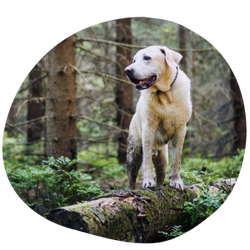


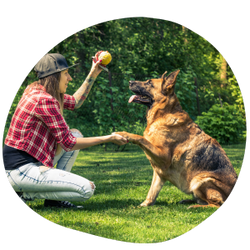
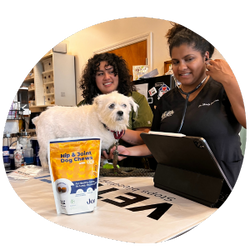
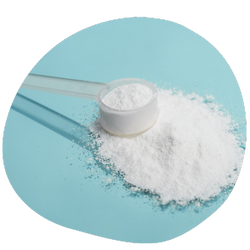
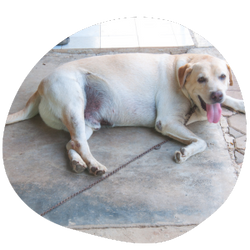

Leave a comment